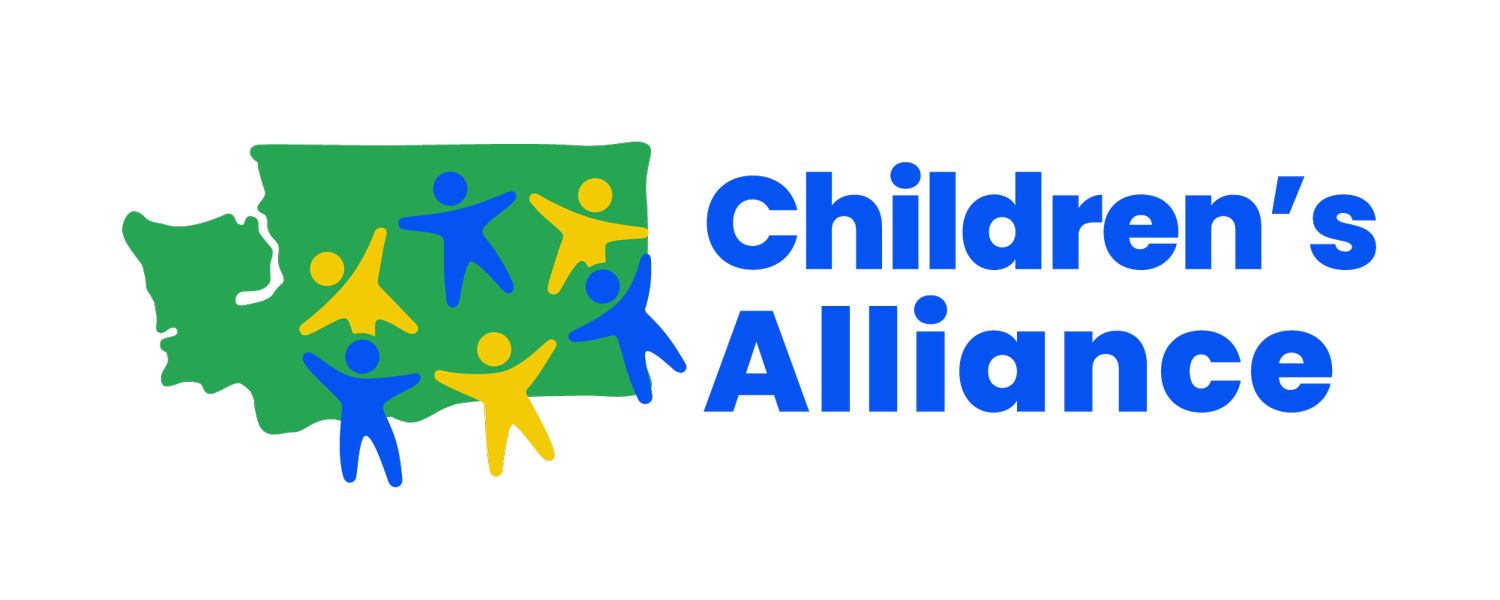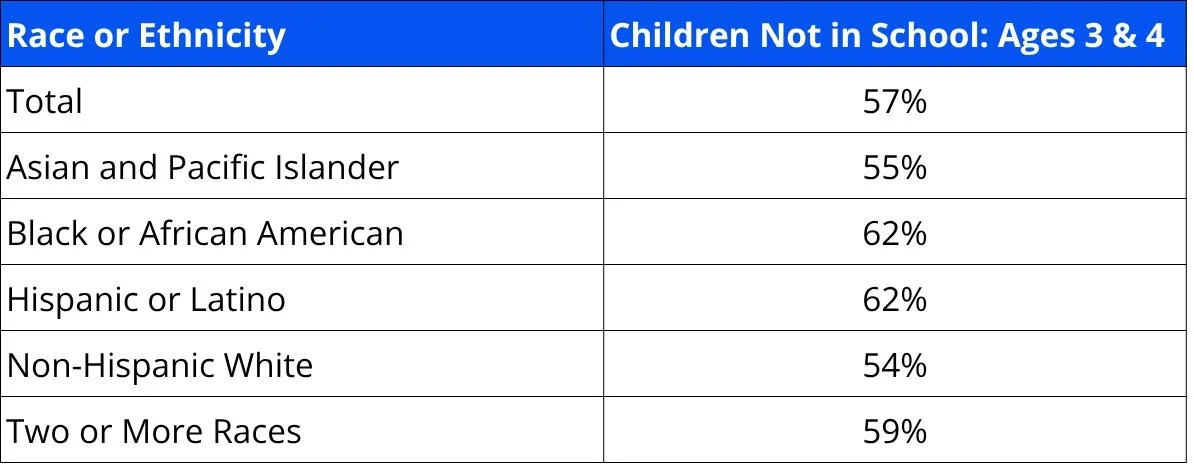ISSUE BRIEF: MOST 3 AND 4 YEAR OLDS ARE NOT ENROLLED IN EARLY LEARNING, WIDENING OPPORTUNITY GAPS
Understanding the “Young Children Not in School” Indicator: To drive meaningful change for kids and families, we rely on data indicators—specific, measurable pieces of information that show how children are doing across key areas like health, education, and economic stability. One key indicator in our KIDS COUNT® data project is the percentage of young children not in school. This brief explores how many children ages 3 and 4 were not enrolled in school—including nursery school, preschool school or kindergarten—during the three months before the data was collected. In this context, "nursery school" and "preschool" include any group or class of institution providing educational experiences for children before kindergarten. Programs where instruction is a core part of the program are included, but private homes that primarily provide custodial care are not included. Children enrolled in federally, state, or locally sponsored preschool programs—including Head Start—are considered enrolled in nursery school or preschool. Click here to explore the data.
Overview
Early learning programs offer space for children to learn and play in a safe environment. They also are important hubs that allow families to access resources and for early childhood professionals to help identify when a child may need early intervention services to support their healthy development.
In Washington state, nearly 6 in 10 young children are not in school. There are many reasons why a young child may not be enrolled in school, ranging from a lack of affordability (see our Child Care Provider Rate brief) to family preference. However, access to early learning programs is not evenly distributed.
There is strong evidence to suggest that affordability plays a key role in determining access to early learning programs. An estimated 36% of children who live in families below 200% of the Federal Poverty Level (FPL) are in school, compared to 47% of children with families in households above 200% FPL. In Washington state, families with incomes at or below 60% of the State Median Income qualify for Working Connections Child Care (Working Connections). Although, in theory, all families with household incomes at or below 200% FPL could be eligible for Working Connections, program requirements often create barriers to meaningful access. For example, if a parent stays home to care for a younger sibling, a 4-year-old would not qualify for Working Connections even if their family’s income is below the threshold.
Access to early learning programs is also stratified based on race and ethnicity, as seen in Table 1. This is important because it creates opportunity gaps for children even before they enter kindergarten. Children of color are disproportionately situated furthest from opportunity when it comes to early learning programs.
Table 1: Early learning access is inequitable across race and ethnicity based on American Community Survey data from 2019-2023.
Data were suppressed for Indigenous populations*
Past Work:
Children’s Alliance serves as the backbone organization for the Early Learning Action Alliance, a statewide coalition that collaboratively advocates for policies that can make high-quality early learning accessible to every child in Washington. Although we have seen significant progress through the Fair Start for Kids Act, there is still much work to be done. This is particularly relevant this year, as budget constraints resulted in delays of early learning program expansions envisioned in Fair Start and cuts to existing early learning programs.
The final state budget discontinued funding for all birth-to-three public preschool (the Birth-to-Three Early Childhood Education and Assistance Program, known as Early ECEAP), eliminated thousands of part-time public preschool (ECEAP) slots, and repealed some newly expanded eligibility that make our state’s child care subsidy program (Working Connections) available to more families – including child care providers. Combined with existing barriers for families, these cuts risk that more children will miss out on early learning opportunities. Our team worked in partnership with other early learning advocates and providers across the state to maximize continuity of care for children who are already enrolled and advocate for sustainable improvements that allow more families to access early learning, even in a hard budget year. For example, HB 1351 was signed and will allow 3-year-olds to enroll in an available ECEAP slot after their third birthday, rather than waiting for the next school year.
Ongoing Work:
Every child deserves a high-quality, safe early learning environment. There are a lot of ongoing policy discussions to help make that happen. During the 2025 legislative session, advocates encouraged policymakers to protect existing services for families and improve accessibility, while also ensuring that inflationary increases in the cost of providing high-quality child care are met through rates that are competitive with the tuition costs for families paying for child care out of pocket.
———
County-level data are not available for this indicator, but you can find county-level dashboards from the Department of Children, Youth, and Families here.
*Data are often suppressed—or not reported—when very few individuals are represented, both to protect privacy and to avoid sharing estimates that aren’t reliable. Specifically, estimates are hidden when the possible range of the data (called the confidence interval) is 10 percentage points or wider, indicating low confidence in the accuracy.
KIDS COUNT® is a registered trademark of The Annie E. Casey Foundation., Inc., and is used with permission of the Foundation.

